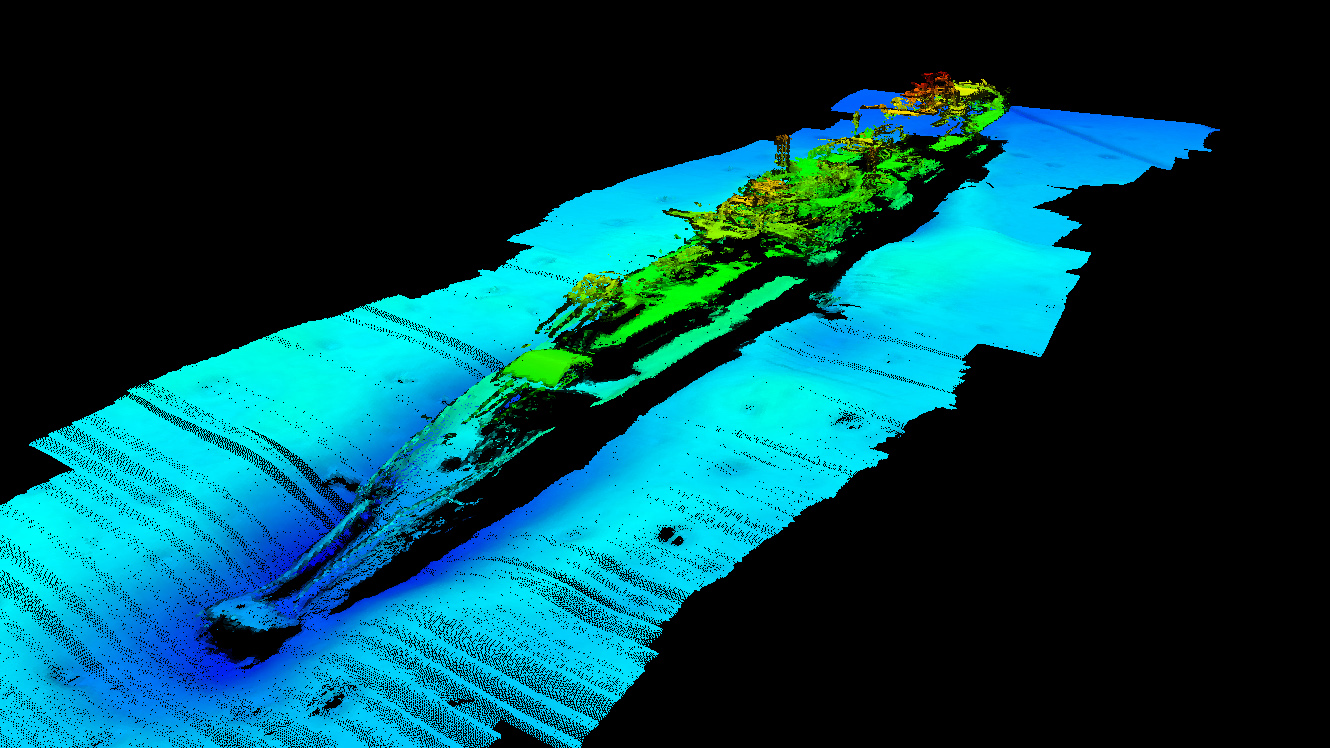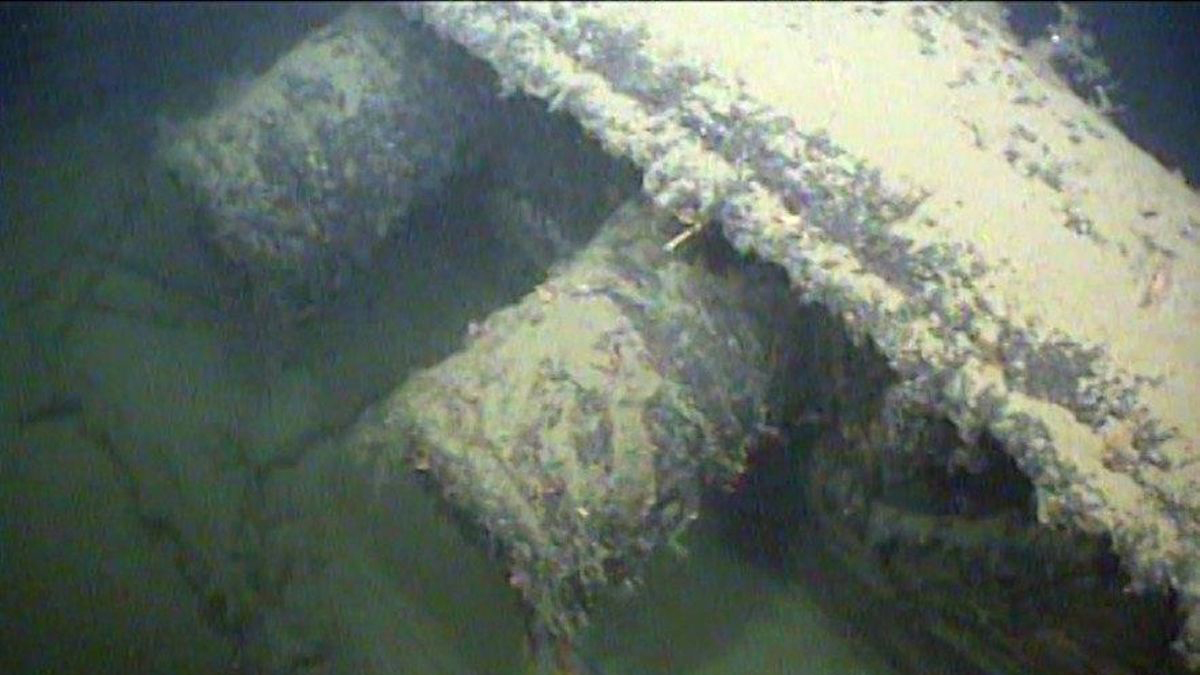Wreck of WWII warship with Nazi symbol discovered off Norway

The wreck of a German warship torpedoed and sunk by a British submarine in 1940 has been discovered in deep water off the North Sea coast of southern Norway.
Norway's electric grid operator Statnett located the shipwreck near its underwater power cables on sonar scans of the seafloor in 2017, according to a Statnett statement.
In August, Statnett sent down an underwater remotely-operated-vehicle, or ROV, to inspect the wreck. The ROV, which was tethered to the offshore support ship Olympic Taurus, sent back detailed images that suggested the wreck was that of the German cruiser Karlsruhe.
Related: 24 underwater drones — The boom in robotics beneath the waves
"When the ROV results showed us a ship that was torpedoed, we realized it was from the war," said project engineer Ole Petter Hobberstad. "As the cannons became visible on the screen, we understood it was a huge warship."
The German cruiser Karlsruhe was launched in 1927 and was equipped with nine 15-centimeter guns. It was 570 feet (174 meters) long and could reach a top speed of 32 knots (37 mph or 59 km/h) — quite fast for the time.
The wreck now lies upright on the seafloor beneath 1,607 feet (490 m) of seawater, about 13 nautical miles (24 kilometers) from the port city of Kristiansand on Norway's southern coast.
Get the world’s most fascinating discoveries delivered straight to your inbox.
According to the Reuters news agency, Norwegian broadcasters also reported that the underwater images taken by the ROV included a medallion on the warship decorated with a Nazi swastika symbol.

German warship
Karlsruhe was a cadet training ship in the 1930 and was part of German patrols off the coast of Spain during the Spanish Civil War from 1936.
It was being refitted when World War II broke out in September 1939, and it did not see action until April 9, 1940, when it served as the flagship of an attack group during the German invasion of Norway, with Kristiansand as its main target.
Related: Photos: Explore a WWII shipwreck in virtual reality
The capabilities of the warship proved significant during the attack, according to archaeologist Frode Kvalø of the Norwegian Maritime Museum in Oslo.
"The ship was an important actor at a crucial time of Norwegian modern history," Kvalø told Live Science in an email.
The Karlsruhe had suffered hits from Norwegian artillery during the attack, but it's unclear how badly it was damaged.
It then left Kristiansand later that day, bound for Germany; along the way, it was hit by torpedoes from the British submarine Truant, which blasted large holes in the hull. Two hours later, the crew, under orders from the commander, abandoned the ship, which was then deliberately sunk by a German torpedo boat from the flotilla.
The exact location of the sunken ship was unknown for almost 80 years.




Historic wreck
Archaeologists at the Norwegian Maritime Museum studied the sonar data and videos made by Statnett to make a positive identification of the shipwreck, Kvalø said.
One of the decisive factors in the identification were the distinctive asymmetrical aft gun turrets of the Karlsruhe, which can be seen on the wreck, he said.
"Karlsruhe is an impressive sight," he said. "Most big warships in deep waters have turned [over] on the way down to the seabed because of their large superstructure, but the Karlsruhe has gone straight down and is resting on its keel."
"Apart from the bow, which blew up when the last German torpedo hit the ammunition storage, the ship is practically intact," he said.
Editor's Note: This article was updated to correct a statement that said Karlsruhe was was equipped with nine 15-inch guns. The guns were "15 centimeters." The headline was changed to avoid the technical term "battleship," which can refer to the very largest warships.
Originally published on Live Science.
Tom Metcalfe is a freelance journalist and regular Live Science contributor who is based in London in the United Kingdom. Tom writes mainly about science, space, archaeology, the Earth and the oceans. He has also written for the BBC, NBC News, National Geographic, Scientific American, Air & Space, and many others.


